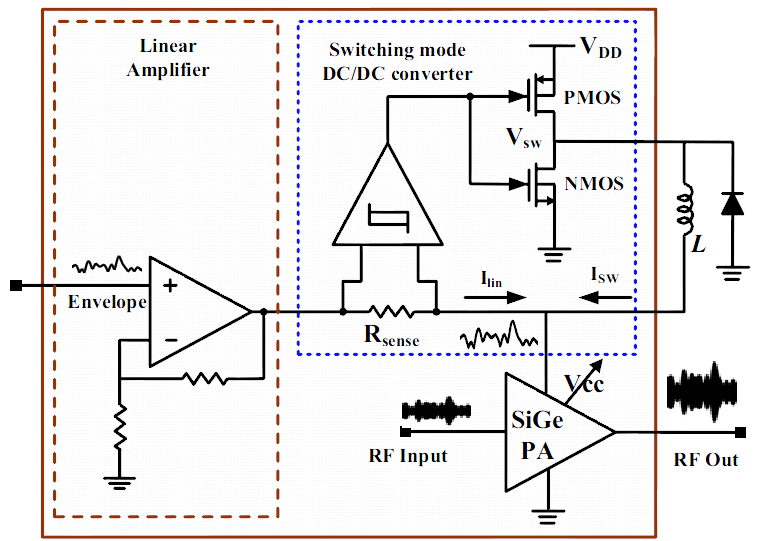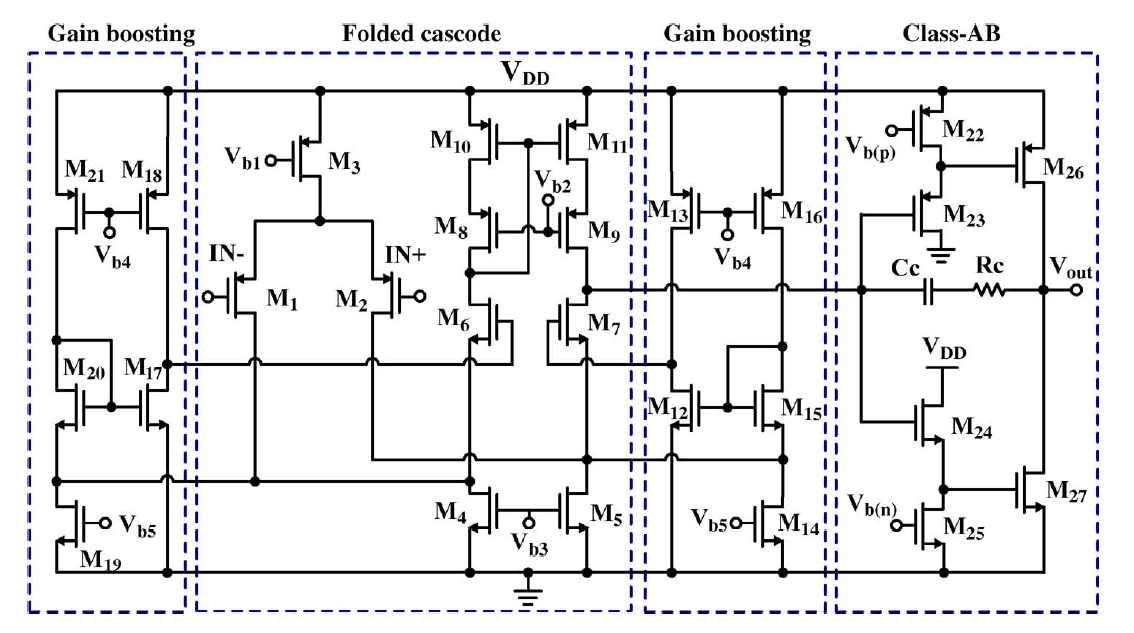Linear Op-Amp in Envelope Tracking Power Amplifier
I have started working on Envelope Tracking Power Amplifier.
Most recent designs have recommended to employ the combination of LINEAR and SWITCHING amplifier. LINEAR stage covers high frequency components and highly efficient SWITCHING stage covers the low frequency ones.
We detect the Envelope of the Input Signal (probably by a suitable Diode) and then send it to LINEAR op-amp.


Here is my question about the first step (Linear Op-Amp that you see above):
As far as I know, Folded Cascode (or similar topologies) are employed in low frequency applications, e.g. less than a couple of Mega Hertz. Is that possible to use it while the frequency of input signal is around 2.5 GHz? (I mean without using combinations of Inductors and Capacitors in Inter-Stage Matching Networks)
Secondly, this topology is required when we need a large value of GAIN. Is a large amount of GAIN is necessary at LINEAR op-amp of the Envelope Modulator?
Since I am very beginner at Envelope Tracking PA, any of your comments (even the ones you assume them simple) will be really appreciated.
Active loads are not very appropriate method for RF signals due to high capacitive components.Therefore this configuration is not convenient.
Instead, a simple Cascode ( why cascode ? Your Bandwith is high ? ) with resistive load will serve better.Output stage should also be modified ( see classical RF output stages )
But the most important thing is to use an appropriate process.Because operating frequency is pretty high and some dedicated CMOS processes are convenient for this application.
You can not consider an amplifier that works at higher frequencies being as OPAMP.They are very special and optimized for RF amplifiers.
It sounds unlikely that the enevope signal has GHz bandwidth. Are you sure about it?
Thanks a lot FvM
You are right and I was mistakenly thinking about Input Signal Frequency instead of its Envelope Frequency. Without doing measurements, how can I find the Envelope Frequency of e.g. WiMAX or WCDMA or ... ? Unfortunately, I have no idea about it.
Required nodulation bandwidth is directly related to channel bandwidth, up to several 10 MHz for the said RF standards.
The complex modulations used today are looking for higher BWs than 10 MHz (even up to 100 MHz).
This would be really a challenge for Envelope Tracking approach, which anyway has its own problems at even lower BW than 10 MHz (like failing TX Output RF Spectrum, and TX Noise Power in RX band).
